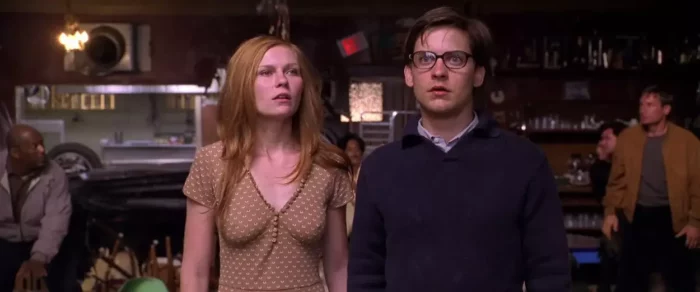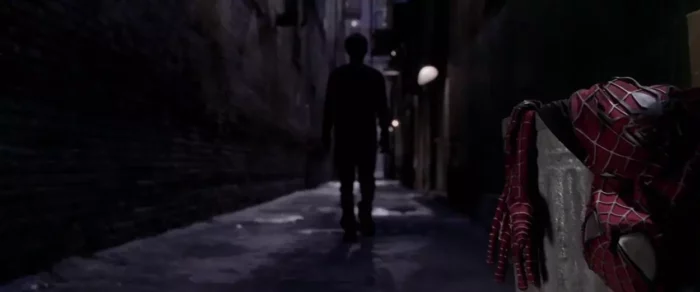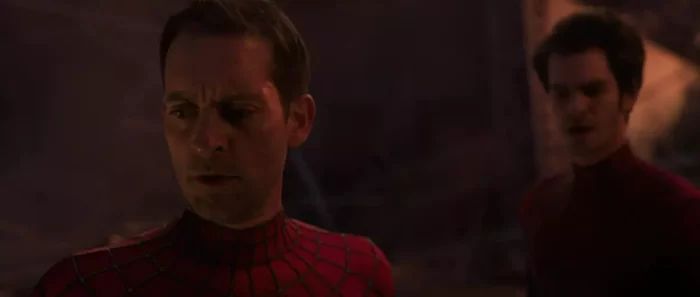“With great power comes great responsibility.” Uncle Ben Parker coined one of the most recognizable phrases in comic book history in 2002s Spider-Man. A smash hit at the box office and with critics and audiences alike, that phrase held meaning for not only Peter Parker/Spider-Man, but the franchise itself in the context of the superhero boom in its infancy. Spider-Man 2 would have its origins already set in place with director Sam Raimi’s first film bestowing Parker with his radioactive spider-bite, and the sequel would make a leap forward not only in action spectacle but with character growth and narrative conflict. Its impact would still be felt on blockbuster and superhero film making twenty years later.
When Richard Donner’s Superman debuted in 1978, the superhero genre would hatch into the cultural ether that would slowly build opportunities for more films and cinematic universes of comic book IP. Tim Burton’s Batman was a colossal hit in 1989, which was followed by three sequels that eventually ran the cape crusader into neon-colored misfires. Bryan Singer would helm two X-Men films in the early 2000s that opened the door again for Marvel comics to test the waters with some of their most well-known characters and stories. Sony Pictures studios flexed their rights to Spider-Man in 2002 with horror/independent film maker Sam Raimi behind the camera, and the success of the origin film opened the gates to sequels and more up-and-coming film makers getting their chances in the genre.

Looking back at 2004, the superhero genre was still finding its footing. The Fantastic Four franchise released two films with sub-par results. Daredevil would be found as a mixed bag as well as its sequel Electra. Auteur film maker Ang Lee’s Hulk from 2003 has its fans but Marvel would eventually recast the character twice. In late July 2004, it would be up to Spider-Man 2 to expand on the success of its first film and be the leader of the Marvel rogue gallery of superheroes. The film would rake in $800 million at the box office and was met with resounding praise from critics and audiences alike. There are many reasons for its success then and how well its stood the test of time both as a superhero sequel and its impact on the genre itself.
Raimi was chosen by Sony Pictures to helm the Spider-Man franchise based on his successful rise in Hollywood with The Evil Dead trilogy. He has always exhibited a mastery of his craft technically, combining various dynamic camera and editing techniques. Zooms, pans, dollys, whips…Raimi has every trick in the bag. His dizzolves and transitions make the viewers think they are moving from comic panels along a page. He also perfectly captured the campy tone required for Spider-Man as a character and the world he inhabits. Returning for his sequel was much of his key cast and crew. Tobey Maguire brought a confidence to his nerdy but affable Peter Parker/Spider-Man and he was played off of very well by Kirsten Dunst as Mary Jane Watson and James Franco as Harry Osborn. Alfred Molina brought a stoic acting class from a previous generation as the evil scientist Doctor Otto “Doc Ock” Octavius. Doc Ock would continue the trend from the first film of Spider-Man’s foes being father-figures, a bittersweet struggle for the protagonist who has lost his parents and his uncle.

With its world established and characters in place, Spider-Man 2 has room to expand. Duality plays a large role in the conflict of the story. Peter Parker struggles to make ends meet as a college student in NYC. He juggles between multiple part-time jobs, his studies, and his responsibilities as Spider-Man. This also strains his relationships with his loved ones. His best friend Harry Osborn becomes obsessed with finding and killing Spider-Man to answer for his fathers death. Parker starts to lose his grasp on long-time crush Mary Jane Watson, not finding the time to support her career as she falls for another man. In a similar trope to Superman and Batman films before it, we see in Spider-Man 2 our titular hero struggle with that duality and even entertain the idea of giving up that life all together.
Raimi and his crew crafted the action spectacle to pay off the dramatic tension within the screenplay. Cinematographer Bill Pope returned from his noble work in the first film, helping Raimi and his special effects team craft action set pieces of the wall-crawling, web-spinning superhero. Danny Elfman’s iconic musical score and themes for Spider-Man reprise and adapt for the sequel. A key theme with Spider-Man in his history is his ability to save his loved ones and the other people of NYC. The bank heist and train sequences with Spider-Man dueling Doc Ock dazzle. The stakes of the Raimi films never balloon into “world saving” calamity of superhero films to follow, and its in the intimacy of seeing Spidey accomplish incredible feats with his powers to save loved ones that Spider-Man 2 excels at.

While being the peak of the Raimi Spider-Man trilogy, the 2nd film would prove heights too high for the 3rd film to reach and foreshadow issues to come for the genre evolution. Spider-Man 3 was released in 2007, and although it’s a mixed bag of results it does have Raimi at the helm even if studio pressure would force a film not fully within his vision. Spider-Man 3 would delve into darker themes that the previous two, but reportedly studio pressure to add in popular Spidey nemesis Venom would give it a “too-many-villains” problem. Studio control of Marvel characters would soon follow with the Marvel Cinematic Universe with 2007s Iron Man, providing both elaborate continuity and character crossover between film and television. That newfound power would be a blessing and a curse, as the Avengers saga would explode the genre for the 2010s, but also burn itself out by the mid 2020s.
Raimi’s success as an original and signature style director would usher in similar formula and success. During the release of Spider-Man 2 in 2004, Warner Bros. and Detective Comics already had emerging director Christopher Nolan’s reboot for their Batman brand Batman Begins in production. Nolan would go on to have a universally acclaimed Batman trilogy, and successful career with his original screen ideas culminating in Oscar-winner Oppenheimer. Other auteur film makers would get their chance in the genre including names like Zack Snyder, Taika Waititi, and James Mangold.
Spider-Man would by no means be finished as an IP after Raimi’s trilogy. He has since appeared In two separate franchises, two excellent animated films, and various cameos in the larger Avengers universe. Maguire’s Spider-Man and Molina’s Doc Ock would get extended cameo appearances in 2021s Spider-Man: No Way Home, showcasing equal parts overindulgence in nostalgia by the MCU and touching send offs for characters that helped the genre find its footing nearly 20 years prior. Raimi himself would dip back into the horror genre with 2009s Drag Me to Hell but ultimately jump into the MCU machine with his Doctor Strange in the Multiverse of Madness. The film would be a mesh of Raimi getting time to paint with his familiar paint brushes within the lines of MCU standards. Spider-Man 2 showcased Raimi at his sweetest and most diabolical with two scenes. Peter Parker loving his new life to the tune of “Raindrops Keep Falling on My Head” and the evil dead inspired surgery scene with Doc Ock’s out of control mechanical arms.

The cast itself has taken different paths since the 2007 Raimi trilogy closed. Maguire hasn’t had many highlights besides 2009s drama Brothers and his previously mentioned revival cameo in No Way Home. Dunst has had a very successful career between TV and film. She has maintained a good connection with film maker Sofia Coppola and worked for indie film makers Lars von Trier and Alex Garland. Franco would mostly star in goofball comedies after Spider-Man, with his highlight being an Oscar-nominated performance in 2010s 127 Hours while J.K. Simmons would make a dramatic turn from his comedic portrayal of J. Jonah Jameson and win an Oscar as the overbearing music teach Fletcher in 2014s Whiplash.
In full retrospect, 2004s Spider-Man 2 would prove to be a crowd-pleasing achievement in superhero film making. Raimi’s first two films would expand on the success of Superman and Batman before them, and usher blockbuster film making into a new era. Raimi inter-twining action spectacle with the fibers of strong dramatic tension would be vital for the films success and lay ground work the the films to come. Superhero films and the genre owe a lot to this formula and the results of such would open the door for much more opportunities, for better (and for worse).



